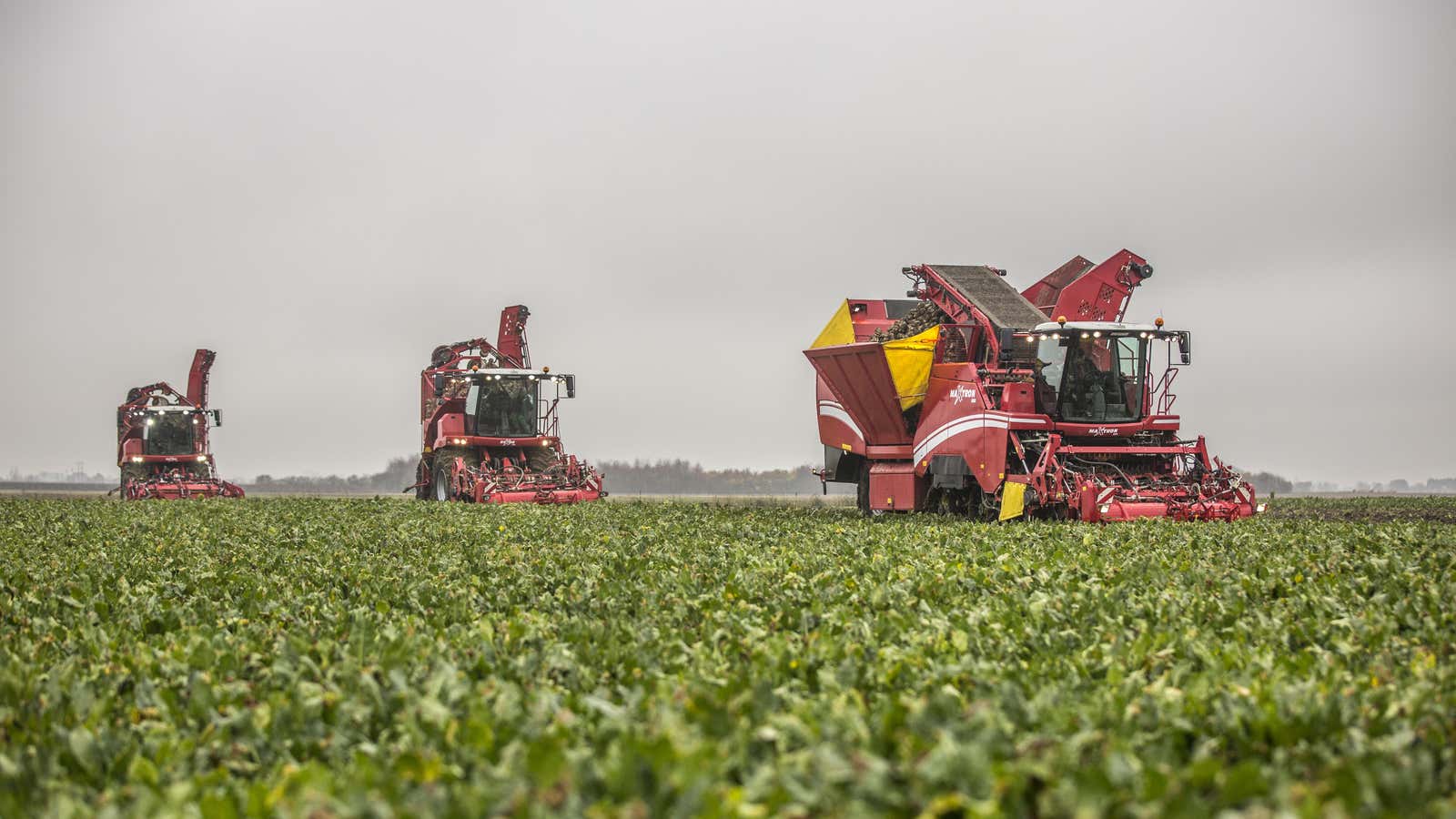For more than a century, farmers have been gathering in coffee shops to trade information about what crops grow best, which seeds are worth planting next season, and the prices for everything from factors to fertilizer. Now those cafes are moving online—and farmers are handing over their fields to the nerds.
The pitch coming from startups and agricultural giants is simple: share your data (confidentially, anonymously) with us, and our algorithms will tell you the best way to increase your harvests and manage your farm.
No one has executed on this vision faster than the Farmer Business Network (FBN) which has tripled membership in its peer-to-peer network to 2,700 farms since last year. The two-year-old startup is funded by GV (formerly Google Ventures) and Campbell’s Soup venture arm, and says it has members in 32 states growing crops on 9 million acres. Farmers agree to share data on soil, yields, weather patterns, and more, and FBN aggregates this data (anonymously) to run virtual crop trials across millions of “acres” simultaneously. For $500 per year, the farmers get the results, which they can apply to their own fields.
FBN co-founder Charles Baron, a former program lead for energy innovation at Google, told Quartz that the company has evaluated more than 4 billion data points. FBN members, he says, outperform USDA county harvest averages by 14%.
In February, the company unveiled a second product: FBN Procurement. The new marketplace platform is designed to combat the fact that agricultural chemical costs can differ by a factor of three across state lines (and even 40% within states) due to opaque pricing models, says FBN. By aggregating reported prices, the network gives farmers price transparency (and one-to-three day delivery) and is angering many retailers in the process.
FBN’s biggest competitor is one of the biggest legacy players in agriculture: Monsanto built it’s FieldView platform to give farmers immediate access to all the data crucial to their operations. Ultimately, it seeks to become an ecosystem similar to Apple’s App store, where farmers can pick and choose from third-party tools to help them track data like soil moisture, weather, and crop projections all in one place. Monsanto said this month that FieldView services reached 92 million acres.
Monsanto is also investing more than $1 billion in models to better understand how thousands of environmental variables—from soil moisture to sunlight—affect crop growth.
But Monsanto faces a major hurdle that can’t be jumped with money: trust. Now that farmers are opening up, and the technology is here, “the greater challenge is still customer adoption and trust in aligning with a large agribusiness that might have other motivations,” Mike Betts, investment director at the agricultural crowdsourcing platform AgFunder, speculated recently.
FBN plans to exploit that skepticism. Its underdog pitch appeals to farmers’ desire to “level the playing field against Big Ag,” Baron says, even if it riles much of the industry’s supply chain in the process. Baron compared today’s status quo in the farming world to ExxonMobil started selling cars. “They’d always sell you Suburbans,” Baron told Wired.
Feature image above by Grimme Group on Flickr, and used under a CC BY 2.0 license.
Correction: A previous version of this post stated the incorrect position of Charles Baron.




